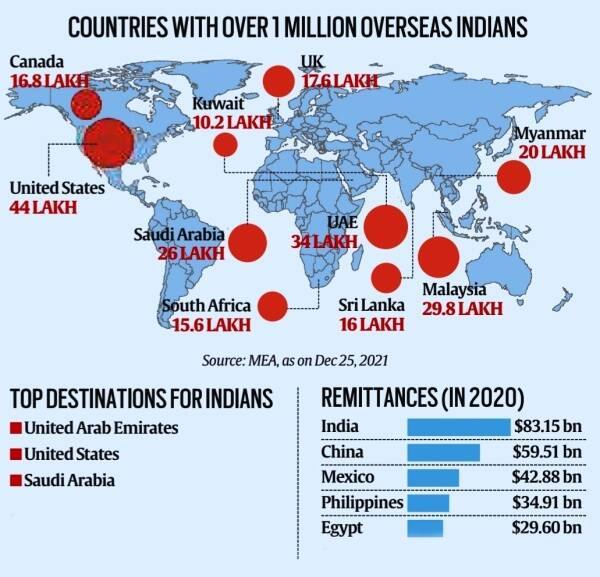-
10 Jul 2025
GS Paper 2
International Relations
Day 22: “Diaspora ties can fray under pressure—not just economies but identities strain too.” Discuss the key challenges recently faced by the Indian diaspora and suggest how India can respond effectively. (250 words)
Approach
- Explain the dual role of the Indian diaspora as both a strategic asset and a cultural bridge.
- Discuss the key challenges recently faced by the Indian diaspora.
- Suggest how India can respond effectively.
- Conclude with a suitable way forward.
Introduction
India’s diaspora, estimated at over 32 million people across 200+ countries (MEA, 2022), is often celebrated as an asset for economic, cultural, and strategic diplomacy. However, in a rapidly shifting global landscape marked by geopolitical tensions, economic disruptions, and identity politics, diaspora ties are increasingly coming under stress.
Body
Key Challenges Faced by the Indian Diaspora
- Geopolitical Tensions and Safety Concerns:
- The India–Canada diplomatic standoff (2023) following allegations around Khalistani extremism led to unease among Indian-origin Canadians and delayed visa processing.
- Racially motivated attacks in the US, UK, and Australia have increased in recent years.
- According to the Ministry of External Affairs (MEA, 2025), at least 91 attacks on Indian students abroad were reported in the past five years, with 30 incidents leading to deaths, underscoring growing concerns over student safety and diaspora security.
- Economic and Employment Pressures:
- Indian professionals in the US faced massive layoffs in the tech sector during 2022–23, leaving thousands stranded on temporary visas (H-1B), with limited time to find alternative employment or face deportation.
- The post-Brexit immigration framework in the UK has affected the Indian student and worker community due to stricter visa norms and rising anti-immigrant sentiment.
- Cultural and Identity Struggles:
- Second- and third-generation diaspora often navigate a conflict between assimilation and heritage preservation.
- The rise of ethno-nationalist politics in host countries has made cultural minorities more vulnerable, leading to identity insecurity among Indian communities.
- Legal and Political Vulnerability:
- Lack of dual citizenship limits political participation and property rights. While the OCI (Overseas Citizenship of India) card offers limited benefits, recent legal rulings have curtailed its scope.
- Cases of deportation and visa overstay penalties, especially in the Gulf and Southeast Asia, remain concerns due to informal employment arrangements.
India’s Response So Far:
- The MEA’s OIA (Overseas Indian Affairs) Division coordinates diaspora issues and grievance redressal through MADAD and e-Migrate portals.
- Humanitarian evacuations like Operation Ganga (Ukraine, 2022) and Operation Kaveri (Sudan, 2023) demonstrate India’s growing capacity to protect its diaspora in crisis zones.
- Cultural initiatives like Pravasi Bharatiya Divas, language promotion, and temple restoration abroad promote heritage continuity.
- Bilateral agreements have been initiated to address labour welfare in the Gulf countries.
Way Forward
- Develop a comprehensive Diaspora Protection Framework with consular legal aid, anti-discrimination clauses in bilateral treaties, and crisis preparedness.
- Invest in diaspora mapping and outreach, especially for vulnerable segments (students, blue-collar workers).
- Expand OCI rights to allow greater civic and economic participation.
- Strengthen educational and cultural exchange programs to reinforce identity and belonging among younger generations.
Conclusion:
As Shashi Tharoor aptly notes, “India should see its diaspora not as an obligation to be served, but as an asset to be leveraged.” In a volatile world, the Indian diaspora is a key source of soft power and economic strength.India must adopt a proactive and inclusive policy approach to ensure diaspora ties remain resilient, mutually beneficial, and enhance its global standing.





